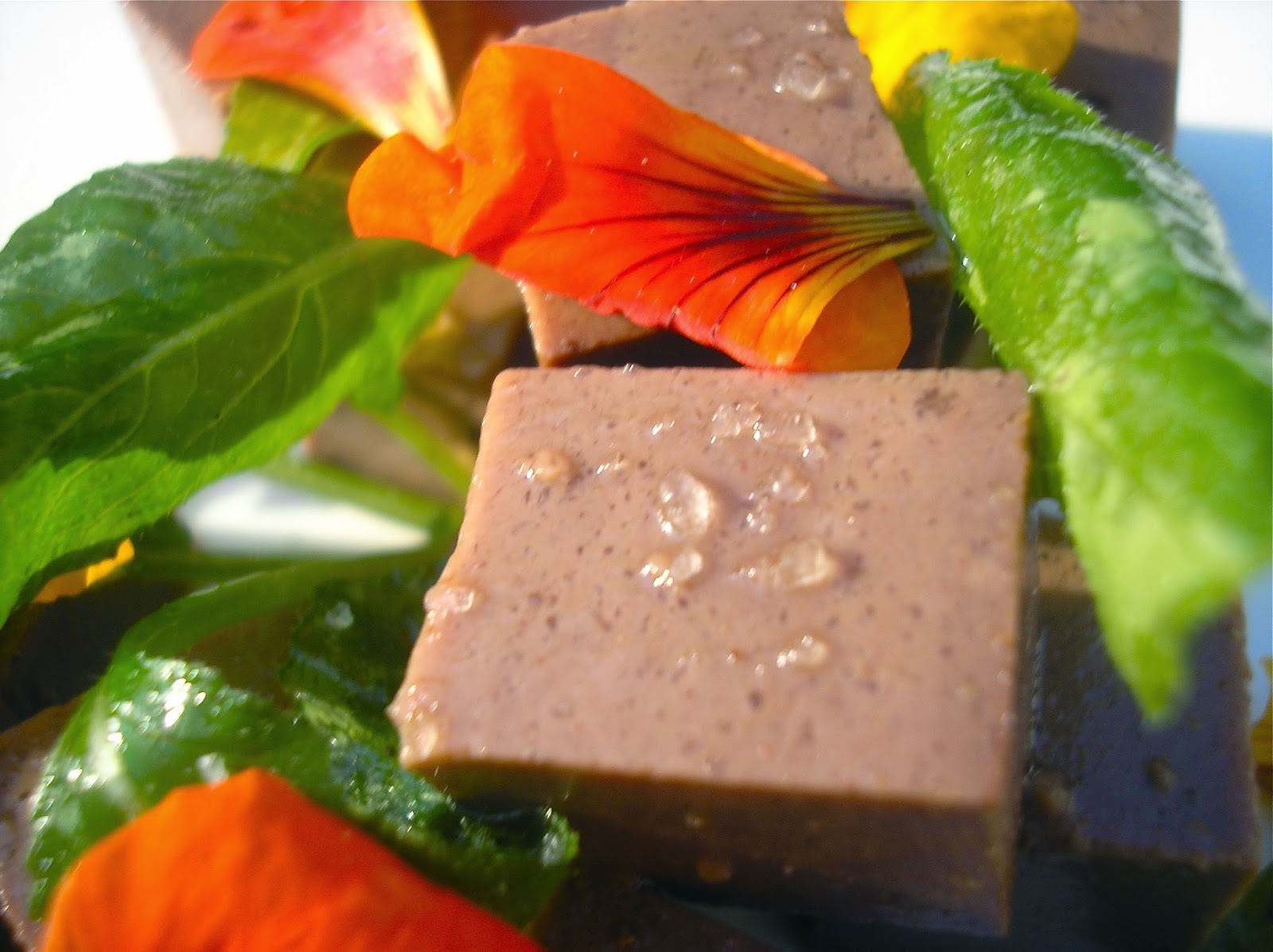 |
King Island Diary Roaring Forties Blue cheese with Olive Caramel sauce, Salt cured Baby Roma tomatoes, Melon confit, Smoked Black Muscat grape, Young Celery leaves and Baby coriander.
|
I'm not a real fan of blue moulded cheeses and I put it down to that first experience. I can recall mine vividly as my German father was born in Tilsit he would some times be giving by his german friends or buy himself Tilsiter or Cambazola. I was the the later also known as 'blue brie' needed to be vacuum sealed, locked up, frozen or something, when that came out of the packet the two cats ran away. The smell was of rotten socks and vomit and my dads breath after eating the tiniest piece, can't be described here, this kind of put me off blue mould cheese. Until this one popped up from this respectable cheese maker, its creamy and mild with a sweet nutty aftertaste and no repulsive odours. So this was marked down the other day and I picked up a wedge, to do some pairing exercises.
Now what was I to pair with this cheese and I foraged through the fridge. When you have children your fridge tends to store some unseasonal items, such as the rockmelon that Caleb our 6 yo. takes to school every day despite it being nearly the start of winter. Or the baby Roma tomatoes, or the black muscat grapes at the bottom of the crisper. Its quite insane the world our kids are being brought into if you really look into it. The children of today don't know seasonal foods as they see their favourite bright coloured sweet fruit or vegetable, supplied almost all year round in our supermarkets. Will this in time bring about whole new food pairings in the cooking of the future. Anyway it happens to be that these ingredients are well known match makers with cheeses and so I set out to make an 'unseasonable offerings'. Wanting to incorporate olives in the dish, I decided to go with a sauce I had seen done before
infusing olives in a caramel sauce.
Most of the preparations in this dish required about the same time so these can be done in any order . Below I have listed the preparations for this dish.
Smoked Muscat grape- I put together a boat from aluminium foil and placed some dampened hickory saw dust into the boat and waited for my smoker to heat up. I then placed the boat in the bottom of the smoker and waited until the smoker was full of smoke. Placing a grape on baking paper over a metal bowl of ice and into the smoker on a wire rack above the boat. I smoked the grape with a low heat on the burner for about 5-6 minutes and then switched the burner off and continued to smoke the grape for another 5-6 minutes before removing and cooling at room temperature.
Salt cured tomatoes- For these I first got a saucepan of salted water on the boil, then making a tiny cross incision with a paring knife, so just the skin was cut. These were then put into the boiling water for about 2 minutes, the skins were just starting to come away from the flesh. I removed them from the saucepan and placed them into a chilled water bath before removing the skins with ease. the skinless tomatoes were then drained and placed into a bowl of kosher salt covering them partially. They were then placed into the fridge to cure for around 30-40 minutes before being rinsed under a slow trickle of cold water to wash off the salt, they were now ready to serve.
Melon confit- To make this I set the sous vide water bath to 53 degree C. and in a vacuum sealed plastic pouch I placed melon shavings about 2m thick and frozen rockmelon juice with a little rice wine vinegar, this was cooked at set temperature for 30 minutes before being removed from the pouch. The shavings were rinsed under cold water to remove the juice and then rolled into a scroll and dressed in a little olive oil and seasoned with salt.
Olive caramel sauce- This sauce was adding 2/3 cup of white sugar with about 3 tbsp. of water to a heavy based sauce pan on a medium heat until all the sugar had dissolved and there was a cloudy syrup, being sure not to touch the pan up to this stage. When the sugar starts to bubble I turned the heat up to high and while stirring cooked the caramel until it was a beautiful amber colour. I then added 1/4 cup of black olive puree stirring with a wooden spoon to incorporate, the olive caramel was then removed from the heat and I added a touch of water to form a more sauce consistency. This sauce is served at room temperature.












































